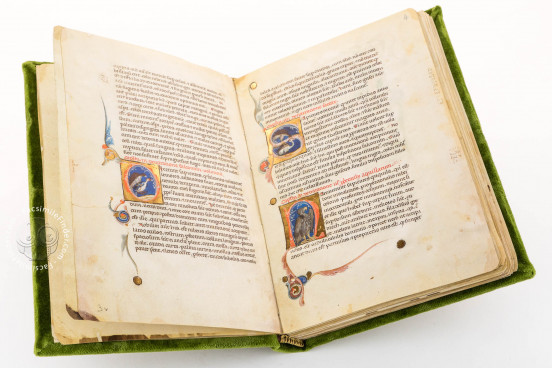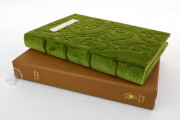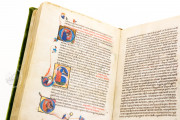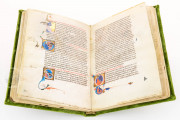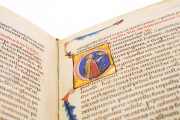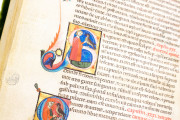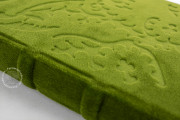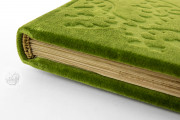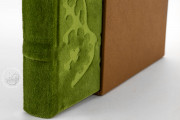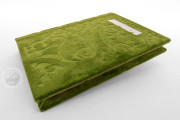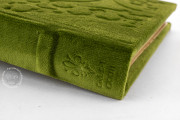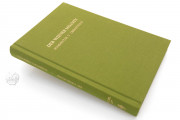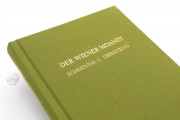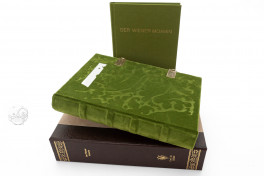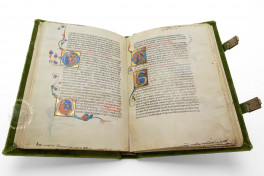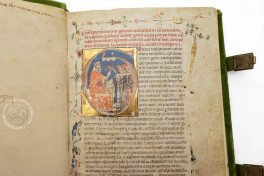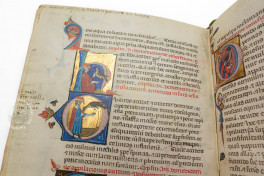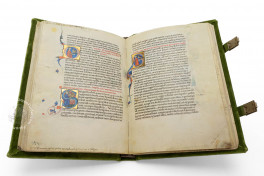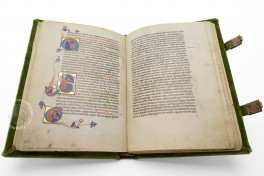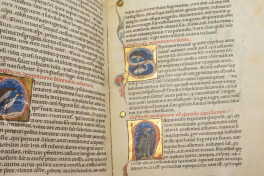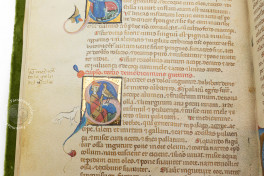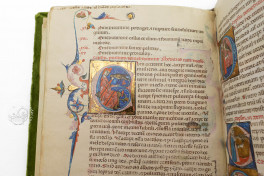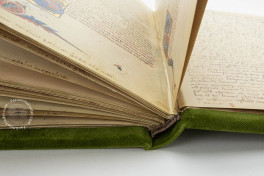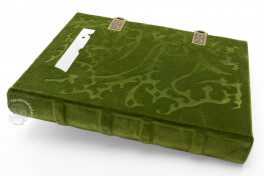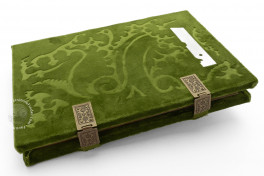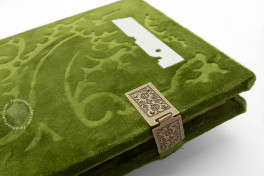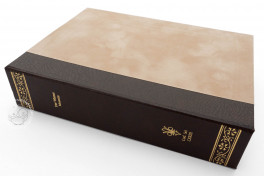The Wiener Moamin (or Moamyn) manuscript is a beautiful example of Gothic book illumination, from the Italian peninsula. The codex, also known as De Scientia Venandi per Aves or Latin Moamin, was written and illuminated in the late 13th century, after the death of Frederick II of Hohenstaufen (1194-1250), King of Sicily, who requested a translation of the text in 1240. With its more than 80 inhabited initials of exceptional quality, the codex is a superb example of Italian production from the Southern area.
Original Version and Content of the Latin Moamin
The work represents the Latin version of an Arabic treatise on falconry – Kitāb al-mutawakkilī – accredited to one Moamin, a name attributed to the work in the Western world but not in the Eastern one. What seems to be certain is that the original content was probably inspired by two oriental hunting treatises from the 8th and 9th centuries: the falcon book of al-Gitrif and the treatise for the caliph al-Mutawakkili.
The work deals with all aspects of hunting with birds and dogs in five books:
- the first book provides in-depth knowledge of birds of prey;
- books 2 and 3 are devoted to the various diseases of birds and tried and tested methods of healing;
- the last two books deal with the correct keeping and care of the hunting dogs.
Frederick II's Collaboration to the Making of the Wiener Moamin
The translation of the elaborated and detailed Arabic version of the treatise was entrusted by Frederick II to the philosopher Theodore of Antioch, a Syrian scholar and one of the most prominent cultural representatives of his court. The king, true lover of falconry, participated to the correction of the work (in 1240 during the siege of Faenza).
This work will have a significant role for the creation of De Arte Venandi cum Avibus, which the king himself will write a few years after. The two works appear complementary, although the Moamin had a greater resonance than the De Arte Venandi cum Avibus: evidence of this are the 27 Latin versions known to exist.
Historiated Initials as a Source of Historical Information
The text, laid out in one-column in a uniform dark-brown font with red chapter headings, is adorned with countless inhabited initials, ranging from 4 to 10 lines in size. The initials represent, at times, a source of information too, along with the content of the text.
An example is the initial o in fol. 7v. which pictures the moult chamber of the falcons. During the annual moulting in the late spring, bird having to renew their feathers, were secluded by the falconer in a specially made mouse chamber. The Wiener Moamin offers a very rare illustration of this device.
Border Decorations and Marginal Notes of the Wiener Moamin
From the corners of the golden ground frames of the initials extend elegantly curved vines, which spread over the free parchment and end in flower and leaf forms. The book painters of the Wiener Moamin manuscript mastered the challenge of visually implementing the somewhat brittle scientific text. Astonishingly, they manage to provide a visual variety with more than 80 different scenes, despite the few quantity of characters.
It is worth noticing the importance of the marginal notes – written in Italian – which represent precise instructions to the miniator, e.g which scenes he had to paint in the fields of the initials written by the scribe. Only in a few medieval manuscripts have there been so many instances. Thus, the Wiener Moamin is an excellent object for studies on the relationship between text and image.
Gothic Textura
The manuscript of the Wiener Moamin exhibits an exquisite example of Gothic script, namely Gothic Textura. Typical of the script are the two forms of r, sharp, straight, angular lines, and bitings (overlapping bows are joined by an upright stroke).
The cover of the Wiener Moamin is not the original one but comes from a later time (middle of the 15th century) and it features 2 metal clasps and a green patterned velvet cover.
We have 2 facsimiles of the manuscript "Latin Moamin":
- Wiener Moamin (Standard Edition) facsimile edition published by Akademische Druck- u. Verlagsanstalt (ADEVA), 2016
- Wiener Moamin (Real Gold Edition) facsimile edition published by Akademische Druck- u. Verlagsanstalt (ADEVA), 2016


